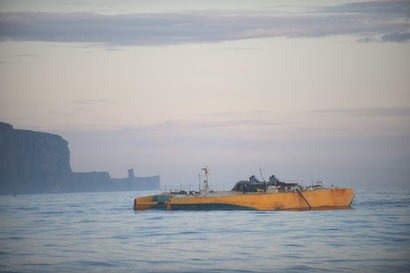
The Penguin was installed at the European Marine Energy Centre’s (EMEC’s) grid-connected wave test site at Billia Croo at the beginning of March by Orkney-based Green Marine. It is the first of three WEC’s due to be installed at EMEC over the next three years as part of the CEFOW (Clean Energy from Ocean Waves) project, funded by the European Union’s Horizon 2020 research and innovation programme.
Led by Fortum, the generation of power is a major milestone within the CEFOW project which aims to ready the Penguin technology for commercialisation by developing the first grid-connected wave energy array in the UK, focusing on lowering the levelised cost of energy and developing an efficient supply chain to support larger wave power projects in the future.
“This is a very exciting period in the project for us, and the Wello office in Orkney has been buzzing with people eager to watch the screens showing the live generation feeds” said Mikko Muoniovaara, senior project manager at Fortum. “This last month has proven the viability of the Penguin concept, as not only can the technology survive in the harsh waves around Orkney, but it can generate power from them. For Fortum, this is very promising progress.”
Neil Kermode, EMEC managing director, added that the project’s success is a tremendous milestone for Wello and all CEFOW partners, but also for the wave energy sector as a whole. Not only has Wello’s Penguin survived heavy swell and stormy conditions since being deployed, it is now generating power into the local grid.
The CEFOW consortium spans the full value chain including research organisations, wave converter technology developers, marine service providers and a large multi-national utility company. In addition to Fortum, the joint project consists of Wello Ltd, Green Marine (UK) Ltd, Uppsala University, Plymouth University, the University of Exeter and EMEC.
For additional information:

